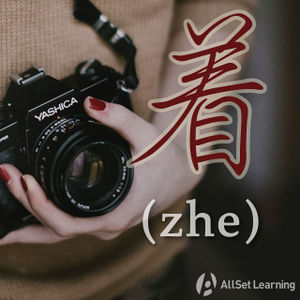Difference between revisions of "Alternative existential sentences"
m (Text replacement - "cellphone" to "cell phone") |
|||
| Line 9: | Line 9: | ||
Typically, Chinese sentences contain the SVO or STPVO word order, but existential sentences have their own order. | Typically, Chinese sentences contain the SVO or STPVO word order, but existential sentences have their own order. | ||
| − | == Structure == | + | == Existential Sentences with "着" == |
| + | |||
| + | === Structure === | ||
<div class="jiegou"> | <div class="jiegou"> | ||
| Line 15: | Line 17: | ||
Place Word/Phrase + Verb + 了/着 + Numeral + Measure Word + Noun | Place Word/Phrase + Verb + 了/着 + Numeral + Measure Word + Noun | ||
| − | == Examples == | + | </div> |
| + | |||
| + | === Examples === | ||
<div class= "liju"> | <div class= "liju"> | ||
| Line 24: | Line 28: | ||
</div> | </div> | ||
| + | |||
| + | == Existential Sentences with "有" and "是" == | ||
Existential sentences have three kinds of verbs: 有 (yǒu), 是 (shì), and verbs that express bodily gestures or actions like 拿 (ná). | Existential sentences have three kinds of verbs: 有 (yǒu), 是 (shì), and verbs that express bodily gestures or actions like 拿 (ná). | ||
| − | == Examples == | + | === Structure === |
| + | |||
| + | <div class="jiegou"> | ||
| + | |||
| + | Place Word/Phrase + Verb + 了/着 + Numeral + Measure Word + Noun | ||
| + | |||
| + | </div> | ||
| + | |||
| + | === Examples === | ||
<div class="liju"> | <div class="liju"> | ||
| − | * | + | * 洗衣机 里 <em>是</em> 一些 衬衫。<span class="pinyin">Xǐyījī lǐ <em>shì</em> yī xiē chènshān.</span><span class="trans">Inside the washing machine are some shirts.</span> |
| − | * | + | * 桌 上 <em>有</em> 一 个 手机。<span class="pinyin">Zhuō shàng <em>yǒu</em> yī gè shǒujī.</span><span class="trans">There is a cell phone on the desk.</span> |
</div> | </div> | ||
Revision as of 09:21, 10 February 2017
| This article is a stub. Editors can help the Chinese Grammar Wiki by expanding it. |
-
Level
-
Similar to
-
Used for
-
Keywords
Existential sentences are used to express an object's existence in a certain place or location. The word order is a little different from that of a regular Chinese sentence, but this is still a pretty useful grammar point as existential sentences express everyday things, like "there is a book lying on the desk," and similar phrases.
Typically, Chinese sentences contain the SVO or STPVO word order, but existential sentences have their own order.
Contents
Existential Sentences with "着"
Structure
Place Word/Phrase + Verb + 了/着 + Numeral + Measure Word + Noun
Examples
- 桌子上着一本书。 There is a book lying on the table.
- 在电影院的椅子上坐着几个人。 Some people are sitting in the chairs in the movie theater.
- 在柜子里挂着一些衣服。 There are some clothes hanging inside the closet.
Existential Sentences with "有" and "是"
Existential sentences have three kinds of verbs: 有 (yǒu), 是 (shì), and verbs that express bodily gestures or actions like 拿 (ná).
Structure
Place Word/Phrase + Verb + 了/着 + Numeral + Measure Word + Noun
Examples
- 洗衣机 里 是 一些 衬衫。Inside the washing machine are some shirts.
- 桌 上 有 一 个 手机。There is a cell phone on the desk.
Note when using existential sentences, you are describing an object's existence in some place or location. Also, when using 有 and 是, note that 是 is used to describe a singular, or one object existing somewhere while 有 can refer to multiple objects/ people.
See Also
- Indicating location with "zai" before verbs
- Special cases of "zai" following verbs
- Expressing existence in a place with "zai"
Sources and Further Reading
Books
- Integrated Chinese: Level 1, Part 1 (3rd ed) (p. 128) →buy
- Integrated Chinese: Level 2, Part 1 (p. 191) →buy
- Integrated Chinese: Level 2, Part 2 (pp. 264, 325)→buy
- New Practical Chinese Reader 4 (新实用汉语课本4) (pp. 40-1, 164-5, 185) →buy



